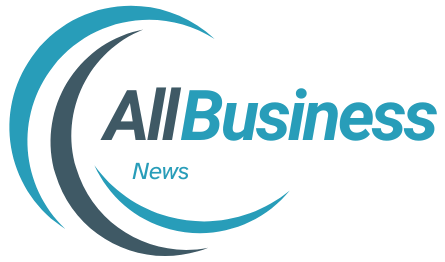VHZPTFHRM – The modern organizational landscape is marked by the rapid adoption of new technologies, automation, and digital tools for operational efficiency and building competitive advantage. One such relatively new emerging framework is VHZPTFHRM, which stands for Variable Hierarchical Zero Point Technology Framework for Human Resource Management.
This framework combines modern technologies and machine learning to artificial intelligence and data analytics to change the way businesses interact and relate with their human resources. We will discuss the industry impact, importance, and the value VHZPTFHRM offers in this piece.
Getting Familiar with VHZPTFHRM
VHZPTFHRM is a considerable advanced system employing technology for human resource management (HRM) and VHZPTFHRM. This terminology fits together with the components as outlined:
- Variable: Highlights the adaptability of the framework to different business settings, environments, and needs.
- Hierarchical: Relates to the multi-layered structure of HRM that is capable of managing diverse operations within the organization.
- Zero-Point: Refers to an optimal balanced approach to any decision-making, resource distribution, and process tuning in HR.
At its core, VHZPTFHRM utilizes AI and machine learning to manage large volumes of employee data, automate basic HR functions, and offer insights that can be acted upon. The Framework is flexible and scalable making it useful for all businesses no matter their size, type or sector. VHZPTFHRM streamlines decision-making, improves HR processes, enhances the experience of employees, and makes it possible for businesses to compete in a ‘cut-throat’ market.
Industry Specific Applications
The capacity to reshape HR operations and meet the requirements of a particular industry makes VHZPTFHRM relevant across different industries. We will look into its use in various sectors:
1. Business Sector
VHZPTFHRM is very useful in the business environment because it helps manage big and heterogeneous teams. One of the main advantages of this framework is that it improves the hiring process. It does so by leveraging AI to analyze candidate profiles, ensure they meet the established job requirements, and make hires based on predictive success estimates in the company’s culture. Predictive analytics also aid in workforce planning by assuring businesses have the right skills and capabilities as they expand.
Moreover, VHZPTFHRM improves employee engagement and retention through individualized development programs and career advancement opportunities aligned with an employee’s appraisal data. With all HR administrative functions like payroll and benefits administration being automated, the HR department can now give more attention to strategic functions such as leadership development and succession planning.
2. Healthcare Industry
The healthcare industry is characterized by distinct challenges and problems such as understaffing, high staff turnover, and the presence of specialized competencies. VHZPTFHRM assists healthcare organizations in these areas by optimizing staffing schedule forecasts to guarantee adequate staffing levels during peak operational times and anticipating future workforce requirements.
AI tools within the framework can also monitor employee wellbeing, assess performance, and burnout mitigation among healthcare workers. Data helps organizations to understand the underlying factors of turnover better and formulate appropriate retention policies. VHZPTFHRM also aids in the retention of healthcare practitioners by streamlining the hiring process and enhancing the precision of candidate assessments.
3. Education Sector
In education, VHZPTFHRM provides better opportunities to manage teachers, other educators, administrative personnel, and support staff. Through predictive analytics, educational institutions can optimize staffing, ensuring that qualified teachers with the appropriate expertise are available when needed.
The framework provides tools for tracking employee effectiveness as well as spotting gaps where extra training might be needed. For example, VHZPTFHRM can assess how professional development activities are serving the participants so that proper assistance is given to the teachers and administrators, aiding them to improve their abilities and better optimize the learning environment for the students.
Alongside this, VHZPTFHRM also greatly assists in the diversity and inclusion agenda by providing intelligence necessary to analyze staffing trends as well as helping institutions to ensure fairness in representation and recruitment processes.
4. Manufacturing & Supply Chain
Operational productivity and staff utilization in the manufacturing and supply chain sectors is a matter of critical importance. VHZPTFHRM looks after these sectors by assisting in the accurate forecasting of labor needs for a business, increasing staff performance, and decreasing operational expenditure. Using information to assess processes and pinpoint areas of inefficiency allows organizations to streamline their workforce and increase productivity.
In addition, the framework allows for the management of safety and compliance issues. The tools in VHZPTFHRM can ensure that the workforce is documented to be qualified and safe through tracking certifications and training schedules as well as compliance to safety standards. The automation of repetitive processes like payroll and benefits administration allows HR practitioners more time to focus on strategy.
5. Retail and Hospitality
Adjusting to demand is one of the most challenging elements within retail and hospitality and managing a high employee churn rate is also an challenge in itself. VHZPTFHRM assists in overcoming these issues by providing optimized workforce scheduling in real time. The framework uses analytical data to help businesses predict peak periods so that customer demands can be met without the threat of overstaffing.
With engagement and retention being key issues within retail and hospitality, frontline employees have to endure tedious and tiresome responsibilities. These gaps are filled through personalized development plans, feedback systems based on performance, and incentive programs that are tailored to individual results. When job satisfaction increases, turnover typically diminishes and loyalty among the workforce heightens.
6. Technology and Startups
VHZPTFHRM allows technology companies and startups to gain control over rapid advancement by managing the workflows through AI technologies. With AI technologies, recruitment, employee development, and performance tracking can all be automated, allowing for smoother operations in fast-paced environments. Furthermore, these tools make it easier to find candidates because they can be accurately assigned according to their skillsets, and even future talent requirements can be smoothly predicted.
The framework additionally strengthens self-directed training policies rooted in the employee’s competencies and professional goals and provides an avenue for continuous learning. This is crucial in information technology as business innovations and skill grabbing advances occur within a short time frame, necessitating self-improvement.
Advantages of VHZPTFHRM
The implementation of VHZPTFHRM comes along with many advantages. The major advantages are:
- Increased Productivity: The Shifting of HR works such as payroll and compliance obligations in VHZPTFHRM will relieve them off strategic work and enhance productivity.
- Informed Decision Making: Having access to comprehensive data analytics, organizations can make informed decisions regarding recruitment, workforce planning, and employee engagement.
- Greater Employee Engagement: Employee retention is enhanced through personalized development plans, flexible work options, and better communication VHZPTFHRM.
- Adaptability: The framework can meet the needs of all types of businesses and assist with scaling HR services as organizational growth is achieved.
- Reduced Costs: Optimizing staffing levels, minimizing turnover, and improving productivity through VHZPTFHRM helps businesses reduce expenses associated with labor.
Problems with Introducing VHZPTFHRM
Even with its advantages, there are problems such as the ones indicated below for implementing VHZPTFHRM.
- Integration with Other Systems: The introduction of new technologies might disrupt older HR systems which can be complicated and costly.
- Data Privacy Issues: Employee data gathering and analysis for performance management and predictive analytics surely compromise privacy and security.
- Training and Adoption: The new system might require training of HR personnel and employees which can further increase costs.
- Changing the Status Quo: Employees and managers trained in older HR technologies and processes will slow down the shift to new systems.
FAQs
1. What does VHZPTFHRM stand for?
VHZPTFHRM is an acronym for Variable Hierarchical Zero-Point Technology Framework for Human Resource Management, which is a framework for AI, machine learning, and data analytics aimed at solidifying human resource operations.
2. How does VHZPTFHRM benefit businesses?
VHZPTFHRM improves business productivity by performing common HR functions, enhancing the quality of decisions based on data, managing the workforce better, and increasing employee productivity and retention.
3. Which industries can benefit from VHZPTFHRM?
Those who need substantial VHZPTFHRM are corporate businesses, healthcare, education, manufacturing, retail, hospitality, and technology as effective HR management is fundamental to them.
4. What are the main advantages of VHZPTFHRM?
Increased efficiency, enhanced decision making, improved employee satisfaction, scalability of services offered, and reduced costs are the main advantages.
5. What difficulties come with the implementation of VHZPTFHRM?
Difficulty with already used systems, concern for data privacy, the demand for training, adoption, and change resistance from conventional HR functions pose as challenges.


